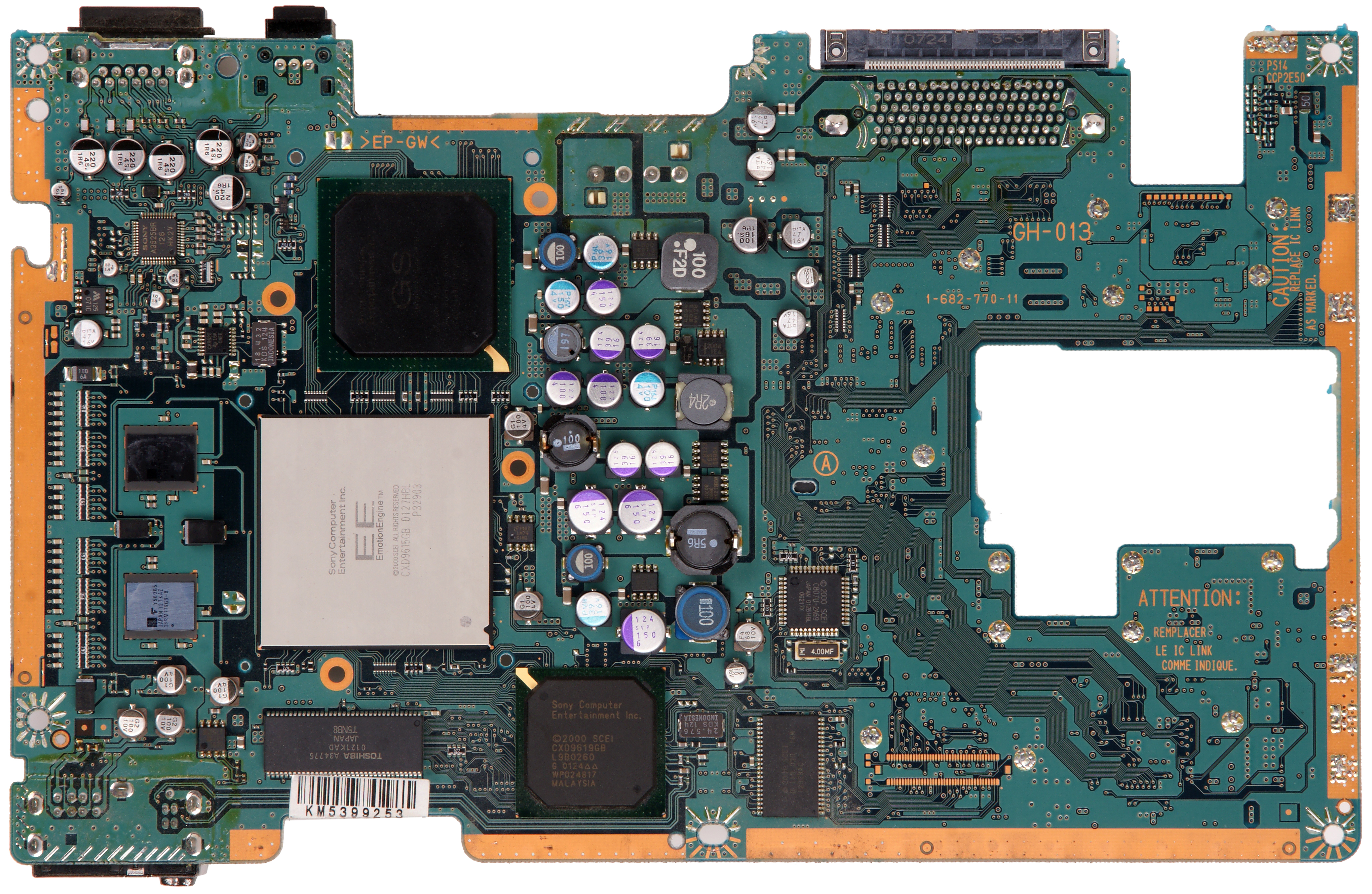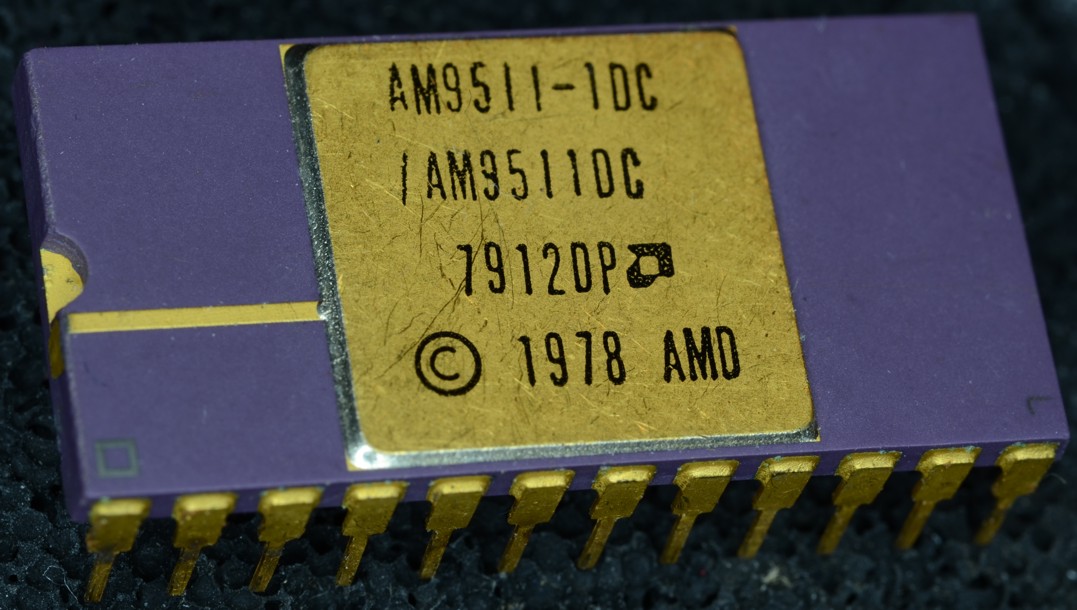|
Scratchpad Memory
Scratchpad memory (SPM), also known as scratchpad, scratchpad RAM or local store in computer terminology, is a high-speed internal memory used for temporary storage of calculations, data, and other work in progress. In reference to a microprocessor (or CPU), scratchpad refers to a special high-speed memory used to hold small items of data for rapid retrieval. It is similar to the usage and size of a scratchpad in life: a pad of paper for preliminary notes or sketches or writings, etc. In some systems it can be considered similar to the L1 cache in that it is the next closest memory to the ALU after the processor registers, with explicit instructions to move data to and from main memory, often using DMA-based data transfer. In contrast to a system that uses caches, a system with scratchpads is a system with non-uniform memory access (NUMA) latencies, because the memory access latencies to the different scratchpads and the main memory vary. Another difference from a system that ... [...More Info...] [...Related Items...] OR: [Wikipedia] [Google] [Baidu] |
Computer
A computer is a machine that can be programmed to Execution (computing), carry out sequences of arithmetic or logical operations (computation) automatically. Modern digital electronic computers can perform generic sets of operations known as Computer program, programs. These programs enable computers to perform a wide range of tasks. A computer system is a nominally complete computer that includes the Computer hardware, hardware, operating system (main software), and peripheral equipment needed and used for full operation. This term may also refer to a group of computers that are linked and function together, such as a computer network or computer cluster. A broad range of Programmable logic controller, industrial and Consumer electronics, consumer products use computers as control systems. Simple special-purpose devices like microwave ovens and remote controls are included, as are factory devices like industrial robots and computer-aided design, as well as general-purpose devi ... [...More Info...] [...Related Items...] OR: [Wikipedia] [Google] [Baidu] |
SuperH
SuperH (or SH) is a 32-bit reduced instruction set computing (RISC) instruction set architecture (ISA) developed by Hitachi and currently produced by Renesas. It is implemented by microcontrollers and microprocessors for embedded systems. At the time of introduction, SuperH was notable for having fixed-length 16-bit instructions in spite of its 32-bit architecture. This was a novel approach; at the time, RISC processors always used an instruction size that was the same as the internal data width, typically 32 bits. Using smaller instructions had consequences: the register file was smaller and instructions were generally two-operand format. But for the market the SuperH was aimed at, this was a small price to pay for the improved memory and processor cache efficiency. Later versions of the design, starting with SH-5, included both 16- and 32-bit instructions, with the 16-bit versions mapping onto the 32-bit version inside the CPU. This allowed the machine code to continue using t ... [...More Info...] [...Related Items...] OR: [Wikipedia] [Google] [Baidu] |
GPGPU
General-purpose computing on graphics processing units (GPGPU, or less often GPGP) is the use of a graphics processing unit (GPU), which typically handles computation only for computer graphics, to perform computation in applications traditionally handled by the central processing unit (CPU). The use of multiple video cards in one computer, or large numbers of graphics chips, further parallelizes the already parallel nature of graphics processing. Essentially, a GPGPU pipeline is a kind of parallel processing between one or more GPUs and CPUs that analyzes data as if it were in image or other graphic form. While GPUs operate at lower frequencies, they typically have many times the number of cores. Thus, GPUs can process far more pictures and graphical data per second than a traditional CPU. Migrating data into graphical form and then using the GPU to scan and analyze it can create a large speedup. GPGPU pipelines were developed at the beginning of the 21st century for graph ... [...More Info...] [...Related Items...] OR: [Wikipedia] [Google] [Baidu] |
CUDA
CUDA (or Compute Unified Device Architecture) is a parallel computing platform and application programming interface (API) that allows software to use certain types of graphics processing units (GPUs) for general purpose processing, an approach called general-purpose computing on GPUs ( GPGPU). CUDA is a software layer that gives direct access to the GPU's virtual instruction set and parallel computational elements, for the execution of compute kernels. CUDA is designed to work with programming languages such as C, C++, and Fortran. This accessibility makes it easier for specialists in parallel programming to use GPU resources, in contrast to prior APIs like Direct3D and OpenGL, which required advanced skills in graphics programming. CUDA-powered GPUs also support programming frameworks such as OpenMP, OpenACC and OpenCL; and HIP by compiling such code to CUDA. CUDA was created by Nvidia. When it was first introduced, the name was an acronym for Compute Unified Device ... [...More Info...] [...Related Items...] OR: [Wikipedia] [Google] [Baidu] |
Vertex Transformation
In linear algebra, linear transformations can be represented by matrices. If T is a linear transformation mapping \mathbb^n to \mathbb^m and \mathbf x is a column vector with n entries, then T( \mathbf x ) = A \mathbf x for some m \times n matrix A, called the transformation matrix of T. Note that A has m rows and n columns, whereas the transformation T is from \mathbb^n to \mathbb^m. There are alternative expressions of transformation matrices involving row vectors that are preferred by some authors. Uses Matrices allow arbitrary linear transformations to be displayed in a consistent format, suitable for computation. This also allows transformations to be composed easily (by multiplying their matrices). Linear transformations are not the only ones that can be represented by matrices. Some transformations that are non-linear on an n-dimensional Euclidean space R''n'' can be represented as linear transformations on the ''n''+1-dimensional space R''n''+1. These include both aff ... [...More Info...] [...Related Items...] OR: [Wikipedia] [Google] [Baidu] |
Digital Signal Processor
A digital signal processor (DSP) is a specialized microprocessor chip, with its architecture optimized for the operational needs of digital signal processing. DSPs are fabricated on MOS integrated circuit chips. They are widely used in audio signal processing, telecommunications, digital image processing, radar, sonar and speech recognition systems, and in common consumer electronic devices such as mobile phones, disk drives and high-definition television (HDTV) products. The goal of a DSP is usually to measure, filter or compress continuous real-world analog signals. Most general-purpose microprocessors can also execute digital signal processing algorithms successfully, but may not be able to keep up with such processing continuously in real-time. Also, dedicated DSPs usually have better power efficiency, thus they are more suitable in portable devices such as mobile phones because of power consumption constraints. DSPs often use special memory architectures that are a ... [...More Info...] [...Related Items...] OR: [Wikipedia] [Google] [Baidu] |
Cell (microprocessor)
Cell is a multi-core microprocessor microarchitecture that combines a general-purpose PowerPC core of modest performance with streamlined coprocessing elements which greatly accelerate multimedia and vector processing applications, as well as many other forms of dedicated computation. It was developed by Sony, Toshiba, and IBM, an alliance known as "STI". The architectural design and first implementation were carried out at the STI Design Center in Austin, Texas over a four-year period beginning March 2001 on a budget reported by Sony as approaching US$400 million. Cell is shorthand for Cell Broadband Engine Architecture, commonly abbreviated ''CBEA'' in full or ''Cell BE'' in part. The first major commercial application of Cell was in Sony's PlayStation 3 game console, released in 2006. In May 2008, the Cell-based IBM Roadrunner supercomputer became the first TOP500 LINPACK sustained 1.0 petaflops system. Mercury Computer Systems also developed designs based on the Cel ... [...More Info...] [...Related Items...] OR: [Wikipedia] [Google] [Baidu] |
Kibibyte
The byte is a unit of digital information that most commonly consists of eight bits. Historically, the byte was the number of bits used to encode a single character of text in a computer and for this reason it is the smallest addressable unit of memory in many computer architectures. To disambiguate arbitrarily sized bytes from the common 8-bit definition, network protocol documents such as The Internet Protocol () refer to an 8-bit byte as an octet. Those bits in an octet are usually counted with numbering from 0 to 7 or 7 to 0 depending on the bit endianness. The first bit is number 0, making the eighth bit number 7. The size of the byte has historically been hardware-dependent and no definitive standards existed that mandated the size. Sizes from 1 to 48 bits have been used. The six-bit character code was an often-used implementation in early encoding systems, and computers using six-bit and nine-bit bytes were common in the 1960s. These systems often had memory word ... [...More Info...] [...Related Items...] OR: [Wikipedia] [Google] [Baidu] |
Emotion Engine
The Emotion Engine is a central processing unit developed and manufactured by Sony Computer Entertainment and Toshiba for use in the PlayStation 2 video game console. It was also used in early PlayStation 3 models sold in Japan and North America (Model Numbers CECHAxx & CECHBxx) to provide PlayStation 2 game support. Mass production of the Emotion Engine began in 1999 and ended in late 2012 with the discontinuation of the PlayStation 2. Description The Emotion Engine consists of eight separate "units", each performing a specific task, integrated onto the same die. These units are: a CPU core, two Vector Processing Units (VPU), a 10-channel DMA unit, a memory controller, and an Image Processing Unit (IPU). There are three interfaces: an input output interface to the I/O processor, a graphics interface (GIF) to the graphics synthesizer, and a memory interface to the system memory. The CPU core is tightly coupled to the first VPU, VPU0. Together, they are responsible for ... [...More Info...] [...Related Items...] OR: [Wikipedia] [Google] [Baidu] |
Network On A Chip
A network on a chip or network-on-chip (NoC or )This article uses the convention that "NoC" is pronounced . Therefore, it uses the convention "a" for the indefinite article corresponding to NoC ("a NoC"). Other sources may pronounce it as and therefore use "an NoC". is a network-based communications subsystem on an integrated circuit (" microchip"), most typically between modules in a system on a chip ( SoC). The modules on the IC are typically semiconductor IP cores schematizing various functions of the computer system, and are designed to be modular in the sense of network science. The network on chip is a router-based packet switching network between SoC modules. NoC technology applies the theory and methods of computer networking to on-chip communication and brings notable improvements over conventional bus and crossbar communication architectures. Networks-on-chip come in many network topologies, many of which are still experimental as of 2018. In 2000s r ... [...More Info...] [...Related Items...] OR: [Wikipedia] [Google] [Baidu] |
Coprocessor
A coprocessor is a computer processor used to supplement the functions of the primary processor (the CPU). Operations performed by the coprocessor may be floating-point arithmetic, graphics, signal processing, string processing, cryptography or I/O interfacing with peripheral devices. By offloading processor-intensive tasks from the main processor, coprocessors can accelerate system performance. Coprocessors allow a line of computers to be customized, so that customers who do not need the extra performance do not need to pay for it. Functionality Coprocessors vary in their degree of autonomy. Some (such as FPUs) rely on direct control via coprocessor instructions, embedded in the CPU's instruction stream. Others are independent processors in their own right, capable of working asynchronously; they are still not optimized for general-purpose code, or they are incapable of it due to a limited instruction set focused on accelerating specific tasks. It is common for these to be d ... [...More Info...] [...Related Items...] OR: [Wikipedia] [Google] [Baidu] |




